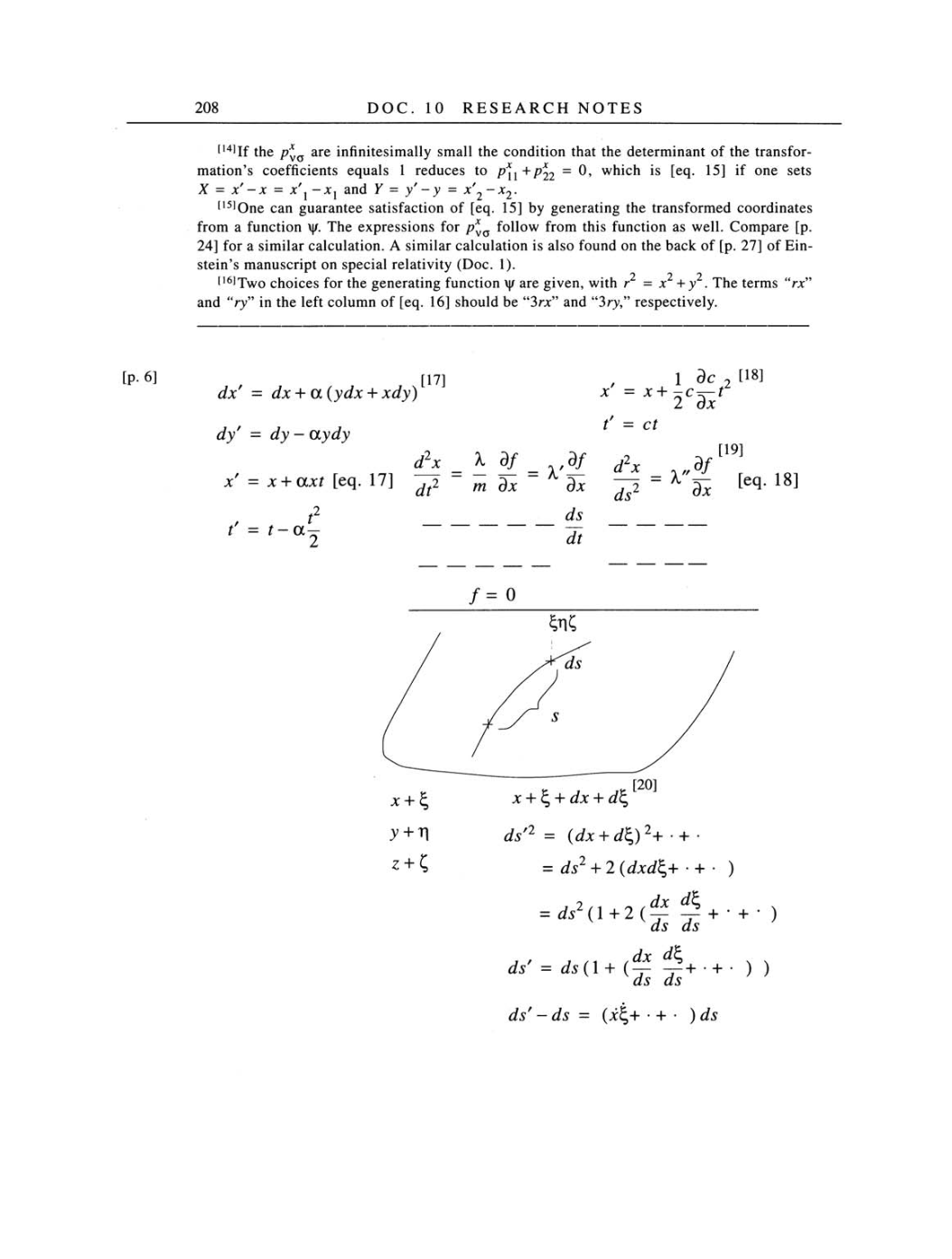208
DOC. 10 RESEARCH
NOTES
[14]If
the
pxv
are
infinitesimally
small the
condition
that
the determinant
of
the transfor-
mation's coefficients
equals
1
reduces
to
Px11+Px22 = 0,
which
is
[eq.
15]
if
one
sets
X
=
x' - x
=
x'1
-
X1
and
Y
=
y'
-
y
=
x'2
-
x2.
[15]One
can
guarantee
satisfaction of
[eq. 15] by
generating
the transformed coordinates
from
a
function
\j/.
The
expressions
for
pxv
follow from this function
as
well.
Compare
[p.
24]
for
a
similar calculation.
A
similar calculation
is
also found
on
the back of
[p. 27]
of Ein-
stein's
manuscript
on
special relativity (Doc.
1).
[16]Two
choices for the
generating
function
\|/
are
given,
with
r2 = x2 +
y2 .
The
terms
"rx"
and
"ry" in
the left column of
[eq. 16]
should
be
"3rx" and "3ry,"
respectively.
[p. 6]
dx'
=
dx
+
a
(ydx + xdy)
[17]
dy'
=
dy
-
ocydy
x'
=
x
+ ax£
[eq. 17]
f
=
t
t~a2
d2
x
dt2
X,
#
m
3x
=
X
3x
ds
dt
1
3c
2
[18]
X
=
X
+
-C^r-t
2
3x
r
=
cr
ds2
[19]
=
X
//
df
Tx
[eq.
18]
y
+
ri
z
+
C
/=
0
ds
S
[20]
ds/2
-
(dx
+ d^)
•
+
•
=
ds2
+
2
(dxd^+
•
+
•
)
9
dx
dE
=
ds2(\
+
2
(==
+
*
+
* )
=
ds ds
,
,1
.dx
di^
ds
(I
+
(-7-
~j~
+
*
+
ds ds
) )
ds'
-
ds
=
(x^+
•
+
•
)
ds
